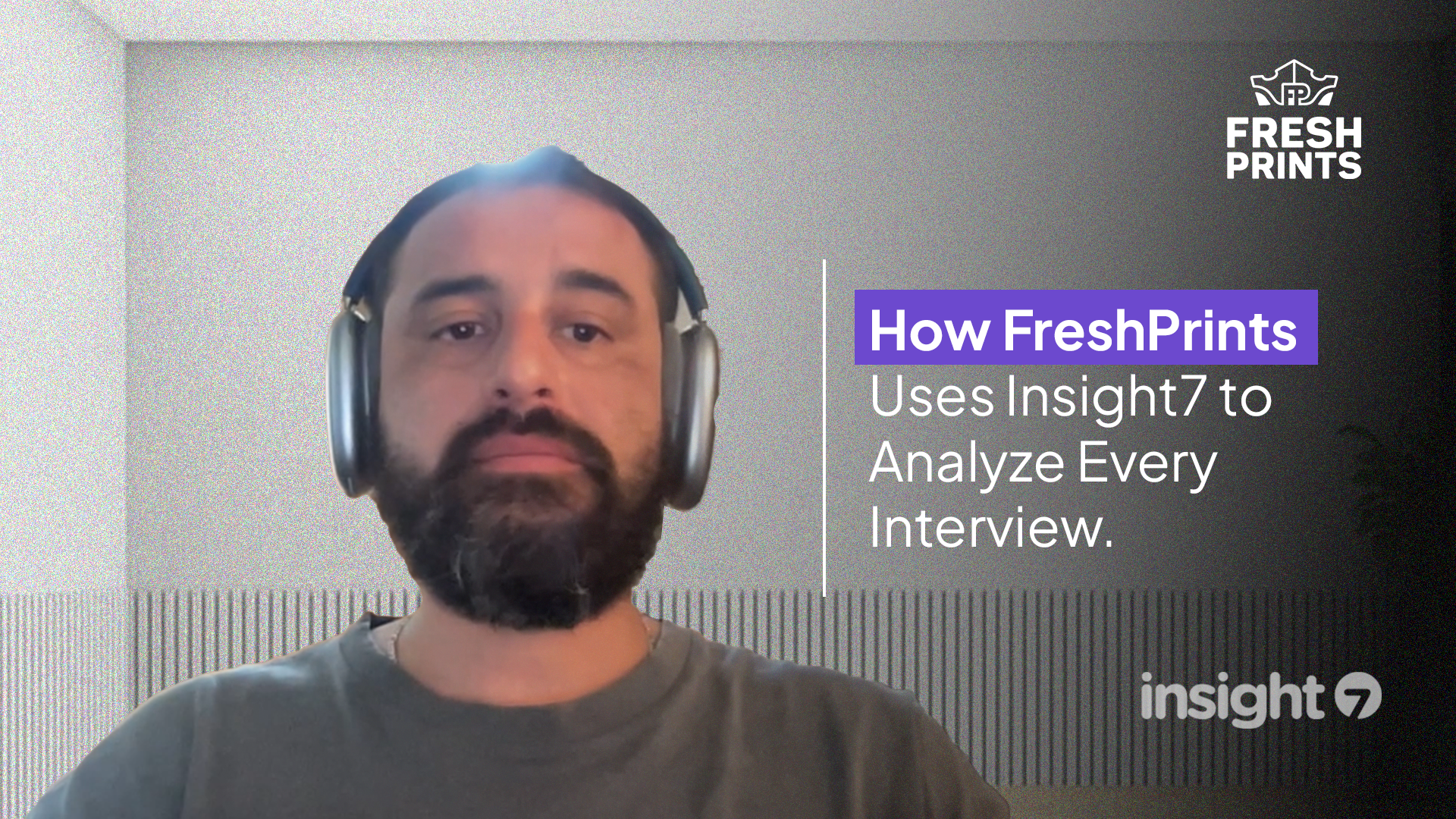How to Create Report From Buyer Calls
-
Bella Williams
- 10 min read
The Buyer Call Report serves as a crucial bridge between customer conversations and actionable insights. Imagine a small team struggling to understand their clients’ needs. After each call, they meticulously document feedback, revealing patterns and pain points. This systematic approach not only aids in identifying trends but also empowers the team to make informed decisions.
Creating a Buyer Call Report requires attention to detail and organization. By systematically gathering data from each call, teams can draw meaningful conclusions. This report can then guide strategies to enhance the customer experience, ultimately driving business success. Understanding how to effectively compile and analyze buyer call data is essential for turning insights into impactful actions.
Generate visualizations from your qualitative data. At Scale.

Understanding the Importance of a Buyer Call Report
A Buyer Call Report plays a crucial role in refining customer interactions. Understanding its importance helps teams gauge the effectiveness of their training and compliance with established frameworks. By having a structured report, it's easier to evaluate performance metrics without sifting through lengthy call recordings manually. This accelerates the analysis process and allows team managers to focus on strategic improvements.
Additionally, Buyer Call Reports can highlight customer inquiries and preferences. This intelligence aids in refining training programs based on real customer interactions. For instance, identifying common questions asked by customers can guide the development of FAQs or other resources. Ultimately, these reports empower teams to enhance customer experiences, streamline call handling processes, and drive overall business growth. Strategies derived from these insights ensure organizations stay responsive to customer needs.
Benefits of Analyzing Buyer Calls
Analyzing buyer calls offers numerous advantages that can significantly enhance your understanding of customer needs. By meticulously examining these interactions, you gain insights into the most common questions and concerns your clients express. This allows for improved alignment of training programs, enhancing your team’s ability to address buyer inquiries effectively. The ability to generate a Buyer Call Report based on analysis provides tangible data, facilitating better decision-making.
Furthermore, reviewing buyer calls helps identify trends and patterns in customer preferences. For instance, shifts in product interest among different demographics can be detected, empowering businesses to tailor marketing strategies accordingly. Ultimately, these reports not only bolster training efforts but also contribute to overall customer satisfaction. Consequently, investing time in analyzing buyer calls can yield significant benefits, fostering a deeper connection with your target audience.
Data Points to Include in a Buyer Call Report
To create an effective Buyer Call Report, it's crucial to gather specific data points during each call. These points help encapsulate the essence of the conversation while providing valuable insights. Start by noting the buyer's key objectives, questions, and concerns. Understanding the customer's needs is essential for tailoring your proposal effectively.
Next, document any feedback about existing products or services. This information can guide future product enhancements and marketing strategies. It's also imperative to capture the buyer's purchasing timeline and budget. This insight helps prioritize follow-up actions and align your offerings with their financial constraints.
In summary, a comprehensive Buyer Call Report should include data on buyer goals, feedback, budget, and timelines. By focusing on these data points, you can transform inquiries into actionable insights, thus fostering a more consultative selling approach.
Evaluate Performance on Customer Calls for Quality Assurance.
Steps to Create an Effective Buyer Call Report
To create an effective Buyer Call Report, start by gathering all relevant call data. This includes details such as call duration, participant names, and any key topics discussed. You should also note any questions asked and the client's responses. Accurate collection of this information lays the groundwork for a meaningful report.
Next, organize the information for clarity. Group similar topics together to identify trends and insights more easily. Consider using a standard format that allows for consistent reporting across different calls. This structured approach helps to ensure readability, making it simpler for stakeholders to extract valuable insights. By thoughtfully executing these steps, your Buyer Call Report will provide actionable information that supports informed decision-making.
Step 1: Gathering Call Data
Gathering call data is a crucial first step in creating an effective Buyer Call Report. Begin by identifying the specific calls to analyze. This may include selecting calls based on particular criteria such as time frame, topics discussed, or customer feedback. Ensure that you have access to relevant call recordings, notes, and any existing evaluations.
Next, categorize the calls into different segments to streamline your analysis. For example, you might group calls based on product inquiries, customer service concerns, or geographical location. By segmenting the data, patterns and insights will emerge more clearly, allowing for better strategic training and decision-making. Utilize a consistent framework to evaluate key performance indicators from these calls, including the frequency and type of questions asked. This fundamental step sets the groundwork for a comprehensive Buyer Call Report that ultimately informs training and process improvements.
Step 2: Organizing Information for Clarity
Organizing the information collected from buyer calls is a crucial step toward creating a comprehensive Buyer Call Report. After gathering raw data, the next goal is to synthesize and structure it effectively. Begin by categorizing notes and transcripts based on recurring themes or significant insights. This allows for a clear understanding of customer needs and pain points. By doing this, you can easily identify patterns that can inform future strategies.
To improve clarity further, consider the following key aspects:
- Thematic Analysis: Group similar responses into themes that represent the predominant issues across all calls.
- Trends Identification: Highlight the most frequently mentioned topics and common concerns, which will guide your business decisions.
- Summarization: Create concise summaries for each theme, focusing on the insights gathered. These summaries serve as quick references and help stakeholders grasp the essentials without wading through extensive data.
Putting these organizing strategies into practice will result in a well-structured report that clearly communicates valuable insights to your team or stakeholders.
Conclusion: Finalizing and Using Your Buyer Call Report
Finalizing your Buyer Call Report is essential for extracting maximum value from the insights gathered during your calls. Begin by reviewing your data, ensuring it is clearly organized and accurately reflects the discussions. Pay attention to key themes, concerns, and suggestions that arose during the conversations. This thorough analysis provides a solid foundation for actionable recommendations that can guide your decision-making process.
Using your Buyer Call Report effectively involves more than just analyzing it; it should inform your strategies and communication with potential customers. Share your findings with your team to foster collaboration and align your goals. Continuous improvement in your consultation skills will not only enhance customer relationships but also ensure that you meet market demands more effectively.







